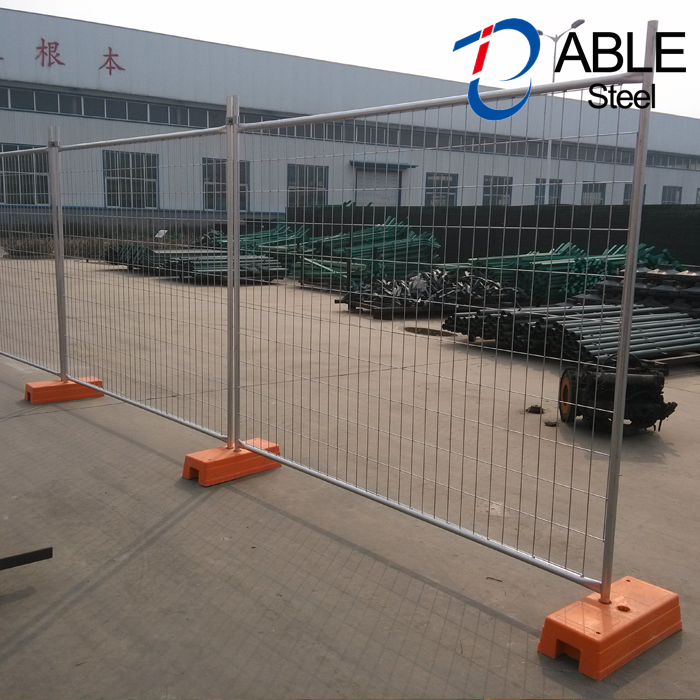The production process of Temporary Fence typically involves the following steps: 1. Material selection: The first step is to select the appropriate materials for the temporary fence. Common materials used include steel, aluminum, and plastic. The choice of material depends on factors such as the desired strength, durability, and cost. 2. Cutting and shaping: Once the materials are selected, they are cut into the desired lengths and shapes. This can be done using various cutting tools such as saws, shears, or laser cutting machines. 3. Welding or joining: In the case of metal temporary fences, the individual components are welded or joined together to form the frame of the fence. This is typically done using welding techniques such as arc welding or spot welding. For plastic fences, the components may be joined using adhesives or mechanical fasteners. 4. Surface treatment: The frame of the temporary fence is then subjected to surface treatment to enhance its durability and appearance. This can involve processes such as galvanizing, powder coating, or painting. Galvanizing involves coating the metal frame with a layer of zinc to protect it from corrosion, while powder coating and painting provide a decorative finish. 5. Installation of mesh or panels: Once the frame is ready, the mesh or panels are installed to complete the temporary fence. The mesh or panels can be made of various materials such as wire, chain link, or plastic. They are attached to the frame using clips, brackets, or other fastening methods. 6. Quality control: Throughout the production process, quality control measures are implemented to ensure that the temporary fences meet the required standards. This can involve inspections, testing, and adherence to industry regulations. 7. Packaging and shipping: Once the temporary fences are manufactured and inspected, they are packaged and prepared for shipping. This may involve stacking or bundling the fences to optimize space and protect them during transportation.
Temporary fences have a wide range of applications across various industries and settings. Some common applications of temporary fences include:
1. Construction sites: Temporary fences are commonly used on construction sites to secure the area and prevent unauthorized access. They can also be used to create separate zones within the site, such as for storage or equipment areas.
2. Events and crowd control: Temporary fences are often used at events, concerts, festivals, and sports games to manage crowds and control access to specific areas. They can be used to create designated entry and exit points, separate VIP areas, or control the flow of people.
3. Safety and security: Temporary fences can be used to create temporary barriers around hazardous areas, such as construction zones, excavation sites, or utility repairs. They help to keep people away from potential dangers and ensure safety.
4. Public spaces and parks: Temporary fences can be used to temporarily close off public spaces or parks for maintenance or renovation work. They help to prevent public access to potentially unsafe areas and protect the public during construction or repair activities.
5. Temporary animal enclosures: Temporary fences can be used to create temporary enclosures for animals, such as during events, fairs, or livestock shows. They can also be used for temporary animal containment during transportation or when regular enclosures are undergoing maintenance.
6. Parking and traffic control: Temporary fences can be used to create temporary parking areas or control traffic flow during events or road construction. They help to organize and direct vehicles, pedestrians, and ensure the safety of all involved.
7. Privacy and screening: Temporary fences can be used to create temporary privacy screens, especially in outdoor settings such as construction sites or events. They can also be used to hide unsightly areas or create temporary barriers for privacy purposes.
8. Landscaping and gardening: Temporary fences can be used to protect newly planted trees, flowers, or other landscaping features from damage by animals or foot traffic. They can also be used to create temporary garden enclosures or define specific areas within a garden.
Overall, the production process of temporary fence involves selecting materials, cutting and shaping, welding or joining, surface treatment, installation of mesh or panels, quality control, and packaging and shipping. The specific steps may vary depending on the type of temporary fence being produced and the manufacturing techniques employed.



